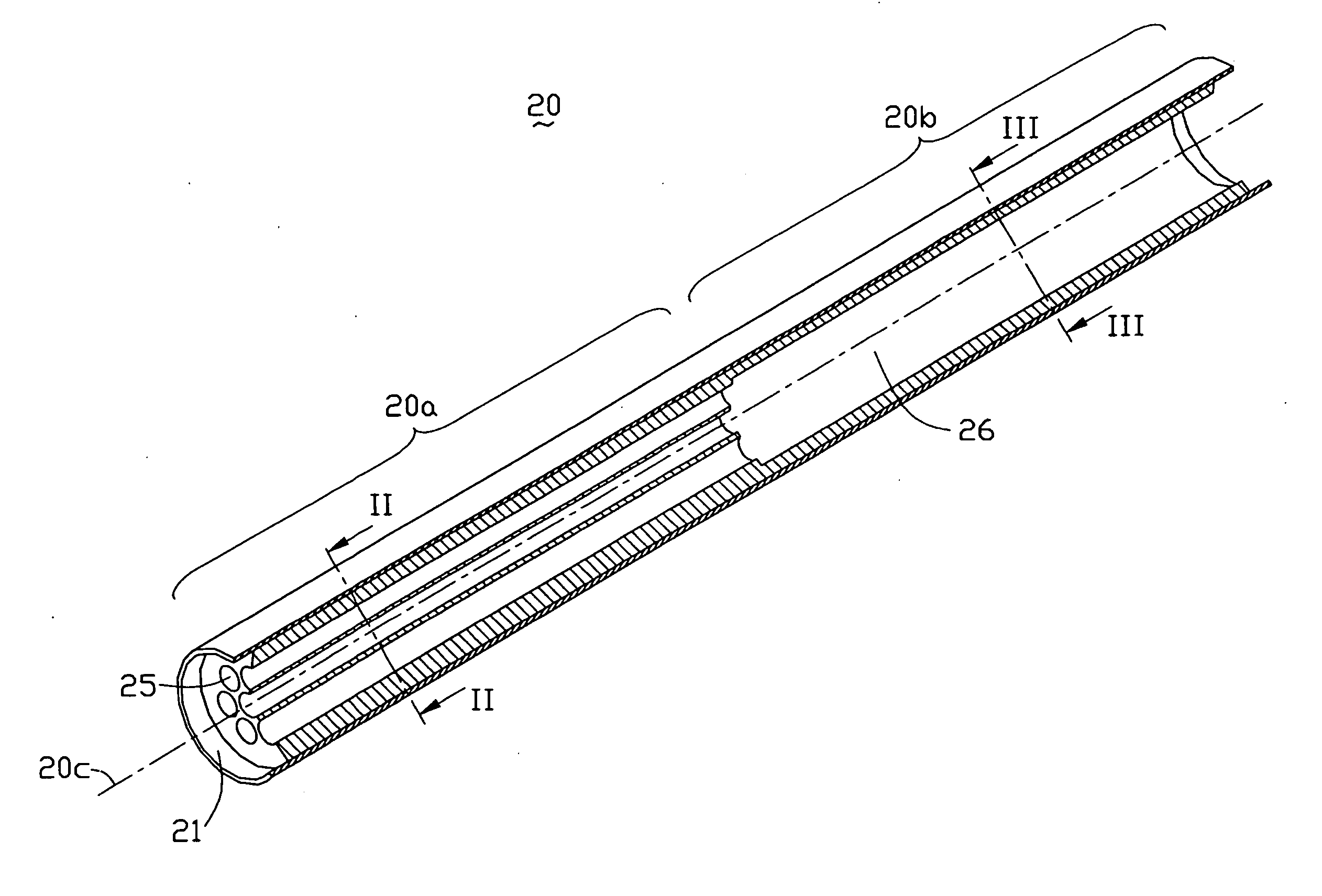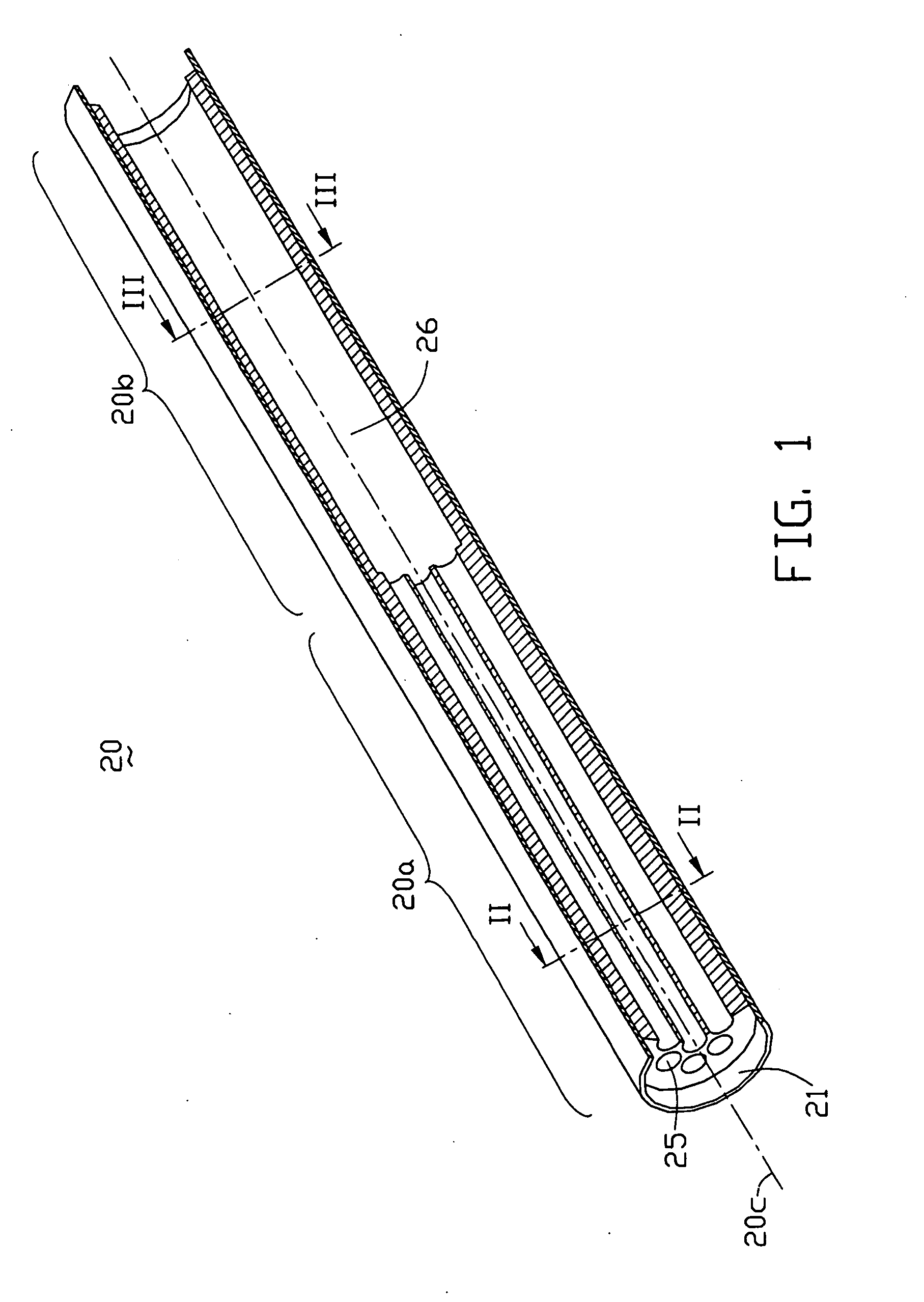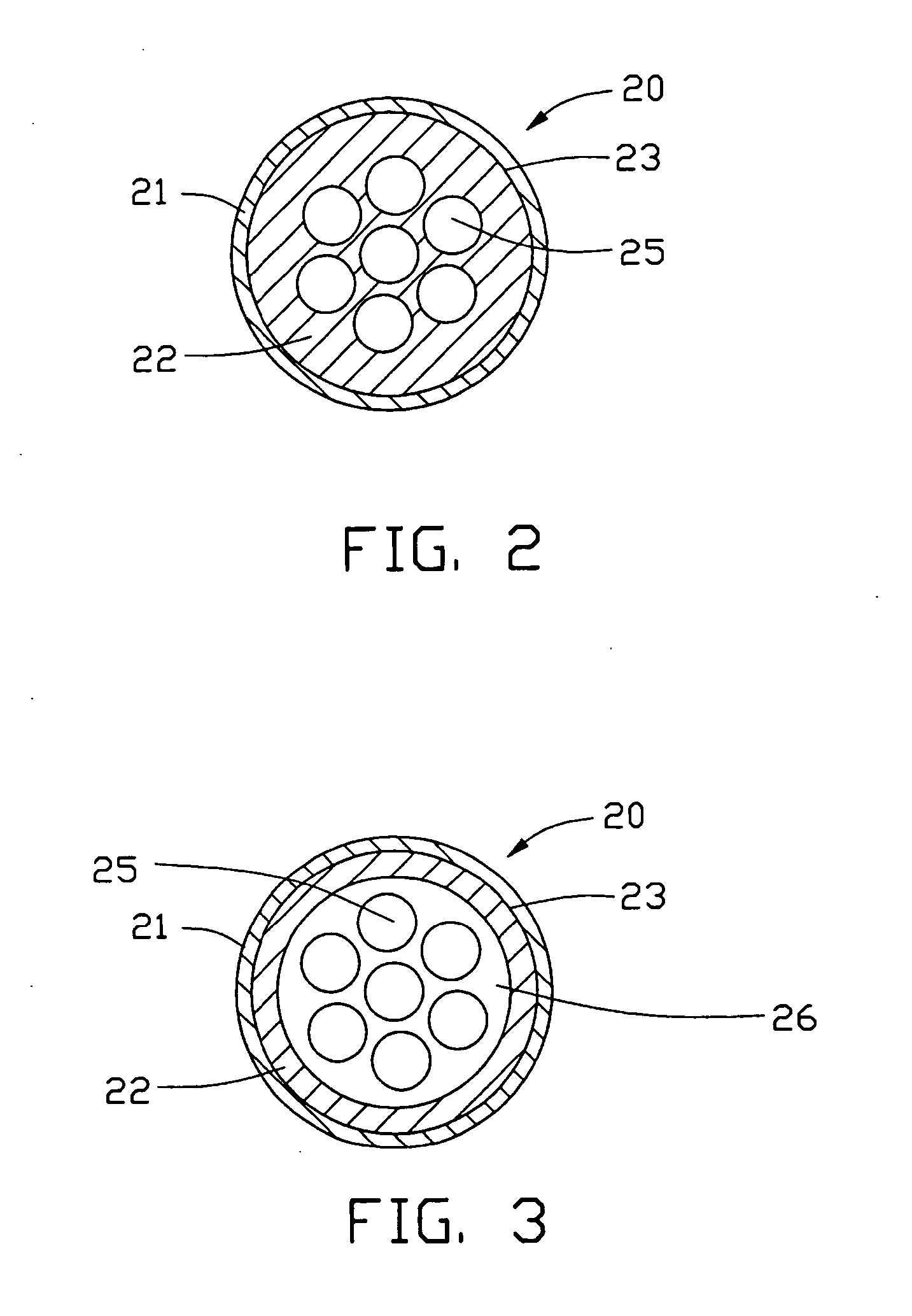Heat pipe having wick structure
a technology of wick and heat pipe, which is applied in the direction of electrical equipment, lighting and heating equipment, and semiconductor devices, etc., can solve the problems of relatively high thermal resistance and low heat transfer capacity of wick, and achieve high heat transfer and evaporator surface area, low thermal resistance, and high capillary force
- Summary
- Abstract
- Description
- Claims
- Application Information
AI Technical Summary
Benefits of technology
Problems solved by technology
Method used
Image
Examples
Embodiment Construction
[0019] Reference will now be made to the drawings to describe the preferred embodiments in detail.
[0020] Referring to FIGS. 1, 2 and 3, a heat pipe 20 of a preferred embodiment includes a pipe 21, a structure of a wick 22 formed on an inner wall 23 of the pipe 21, and a working fluid (not shown) sealed in the pipe 21 and soaked in the wick 22. The heat pipe 20 further includes an evaporator section 20a in the thermal contact with an outer heat source to vaporize the working fluid from an originally liquid state thereof and a condenser section 20b in the thermal contact with a heat dissipation device like a heat sink to condense the vaporized working fluid back to the liquid state thereof. A plurality of first through holes 25 are defined in the wick 22 in the evaporator section 20a of the heat pipe 20. A central one of the first through holes 25 is aligned along an axis 20c of the heat pipe 20, and the other first through holes 25 are parallel to the axis 20c. A second through hole...
PUM
 Login to View More
Login to View More Abstract
Description
Claims
Application Information
 Login to View More
Login to View More - R&D
- Intellectual Property
- Life Sciences
- Materials
- Tech Scout
- Unparalleled Data Quality
- Higher Quality Content
- 60% Fewer Hallucinations
Browse by: Latest US Patents, China's latest patents, Technical Efficacy Thesaurus, Application Domain, Technology Topic, Popular Technical Reports.
© 2025 PatSnap. All rights reserved.Legal|Privacy policy|Modern Slavery Act Transparency Statement|Sitemap|About US| Contact US: help@patsnap.com



